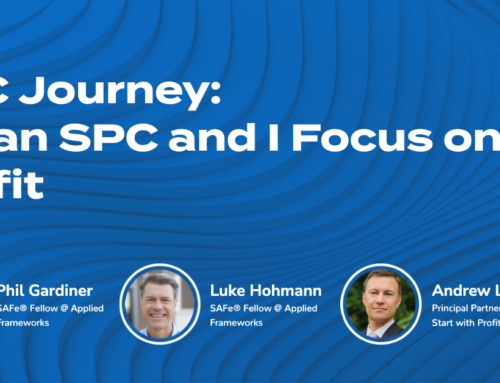An Agile coaching dojo is a safe place to improve three important skills for an Agile Coach – observing, listening and questioning. The goals of an Agile coaching dojo are to offer opportunities to practice listening without judgment, gather information more effectively and ask different kinds of questions to understand the real problem. When an Agile Coach masters these skills, their impact in organization increases dramatically and we use coaching dojos to help our Agile Coaches improve.
In an Agile coaching dojo, three or more people sit in a circle to discuss a real challenge from work with a timebox of ten to fifteen minutes. During the coaching conversation, the participants will take one of the three roles below.
- Client: the person seeking a solution, alternative or a different viewpoint.
- Coach: the person offering help or guiding the client to their goal.
- Observer: the person(s) observing the interactions between the coach and the client.
Once the roles have been distributed, the client begins by stating the problem and the coach asks, “Would you like me to coach you on this?” This is important because a coach must always ask the client for permission to coach. This is crucial because the client must make the choice to be coached by the coach.
Then, the conversation proceeds as normal with the exception that the coach can only ask questions to help the client arrive at their own solution. It is recommended to use open-ended, Powerful Questions when coaching. This focus on questioning is an important distinction and highlights how coaching is different from giving advice or mentoring. Coaches truly believe the client has the best solution for their problem within them and recognize that their role is to help the client see this more clearly. Many coaches use the GROW model to structure their coaching conversations.
After ten to fifteen minutes, the timebox ends. Now the observer(s) offers about two to three minutes of observation about the interactions between the coach and the client. The observer should not try to continue the coaching conversation, but only share what they saw, heard and how they reacted. After the observer shares their comments, the roles rotate (clockwise or counterclockwise) and another round coaching begins. Rotate roles until everyone has had a chance to be the client, the coach and the observer. The dojo ends with about ten to fifteen minutes of sharing between all the participants on what they learned and any new insights they generated.
Keep in mind that many of the elements of coaching are present in an Agile coaching dojo, but some of the very important rules in coaching are relaxed. What is relaxed is the veil of confidentially. In a normal coaching relationship, the coach cannot reveal they are coaching the client nor the topics that are discussed with the client. Because a coaching dojo is place to learn, the interactions between the coach and the client will be observed. That said, anyone participating in the coaching dojo must preserve the confidential of the conversation and the participants. One final note on confidentiality, I would not use this format to coach individuals because people should have an expectation that coaching conversations are kept confidential. A coaching dojo is only for learners.
For more on Agile coaching dojos (which are based upon coding dojos), please read this post by Michael Sahota (@michaelsahota) or this post by Rachel Davies (@rachelcdavies).






